When Sweet, Salty, Sour and Bitter are Just not Enough
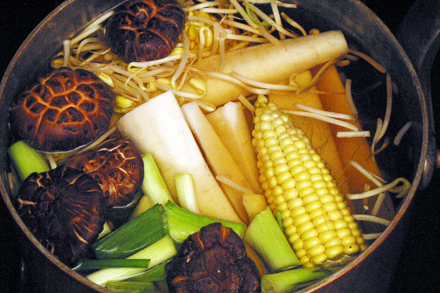 As an open-minded omnivore, I enjoy vegetarian dishes as much as meat dishes. On many occasions I’ve successfully made vegetarian dishes for my vegetarian friends. Many were surprised at the diversity of Chinese vegetarian dishes and commented how flavorful and hearty they were. The key to a rich tasty vegetarian dish is to make use of what is known as umami, which is a Japanese word used to express the fifth taste in addition to the generally accepted four tastes of sweet, salty, sour and bitter. In Chinese umami is known as xian (鮮) and making stock full of umami is the basis for a successful vegetarian dish.
As an open-minded omnivore, I enjoy vegetarian dishes as much as meat dishes. On many occasions I’ve successfully made vegetarian dishes for my vegetarian friends. Many were surprised at the diversity of Chinese vegetarian dishes and commented how flavorful and hearty they were. The key to a rich tasty vegetarian dish is to make use of what is known as umami, which is a Japanese word used to express the fifth taste in addition to the generally accepted four tastes of sweet, salty, sour and bitter. In Chinese umami is known as xian (鮮) and making stock full of umami is the basis for a successful vegetarian dish.




 A few days ago I talked with Andrew Coe about his recently published book
A few days ago I talked with Andrew Coe about his recently published book 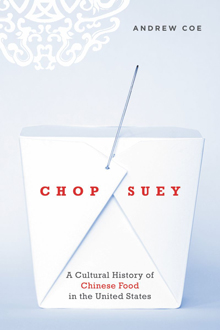
 Like many immigrants to America I constantly search for food of my homeland. This search continues even now after more than thirty years. When I first arrived in the U.S. during the 1970’s the most common Chinese food was still chop suey. I remember being horrified when I was served chop suey as Chinese food at my college dormitory. Not only was it unrecognizable, but also tasted positively vile. I wondered how Chinese food had turned into this mess.
Like many immigrants to America I constantly search for food of my homeland. This search continues even now after more than thirty years. When I first arrived in the U.S. during the 1970’s the most common Chinese food was still chop suey. I remember being horrified when I was served chop suey as Chinese food at my college dormitory. Not only was it unrecognizable, but also tasted positively vile. I wondered how Chinese food had turned into this mess. 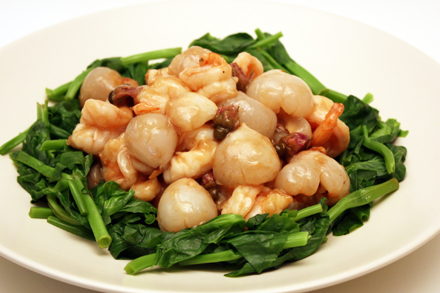
 Summer in Shanghai heralds the arrival of bountiful local fruits like
Summer in Shanghai heralds the arrival of bountiful local fruits like 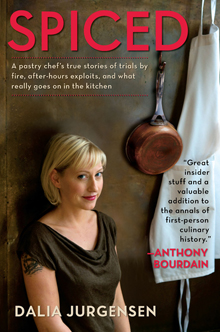
 Last summer during one of my
Last summer during one of my 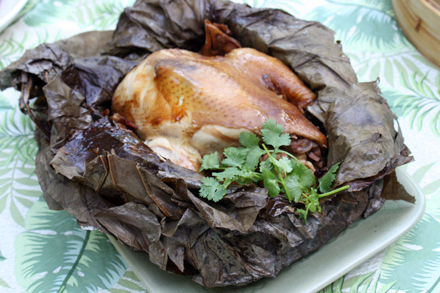
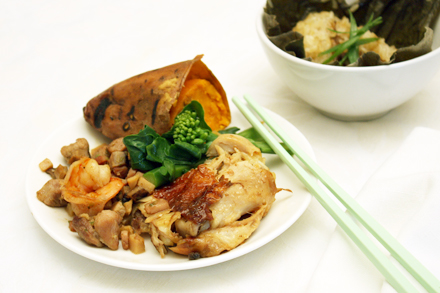 A starving beggar in China during the Qing dynasty is said to have stolen a chicken and was hotly pursued by its owner. In his haste he buried the chicken in mud near a riverbank to hide it. Later that night he returned and retrieved the chicken, its feathers covered in mud. He started a fire of twigs and branches to cook the chicken. But not having any utensils he placed the entire chicken directly into the fire. A tight clay crust formed as the fowl cooked, and when the crust was cracked open the feathers came right off the chicken exposing juicy tender meat and emitting an incredible aroma. The roasted chicken was so delicious he decided to start selling his creation to the villagers. Unbeknownst to him he had just invented one of the greatest culinary traditions of China.
A starving beggar in China during the Qing dynasty is said to have stolen a chicken and was hotly pursued by its owner. In his haste he buried the chicken in mud near a riverbank to hide it. Later that night he returned and retrieved the chicken, its feathers covered in mud. He started a fire of twigs and branches to cook the chicken. But not having any utensils he placed the entire chicken directly into the fire. A tight clay crust formed as the fowl cooked, and when the crust was cracked open the feathers came right off the chicken exposing juicy tender meat and emitting an incredible aroma. The roasted chicken was so delicious he decided to start selling his creation to the villagers. Unbeknownst to him he had just invented one of the greatest culinary traditions of China.
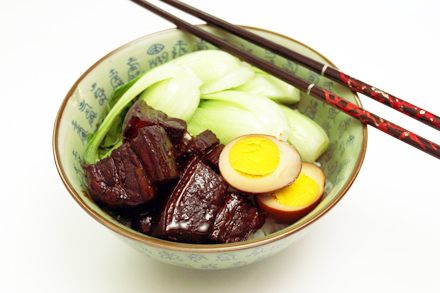
 Chinese takeout lunches as a rule are fast, convenient, filling and economical. We in America know them as a Styrofoam container loaded with heaps of white rice, and topped with a gooey sticky stir-fry. Sometimes accompanied by a grease soaked fried spring roll. Although the quality of these lunches is not always consistent they are mostly tasty and satisfying. I’m not ashamed to say that I occasionally enjoy them as well. But are there homemade alternatives that can be more fulfilling than these quintessential takeout lunches? One answer is red cooked pork over rice.
Chinese takeout lunches as a rule are fast, convenient, filling and economical. We in America know them as a Styrofoam container loaded with heaps of white rice, and topped with a gooey sticky stir-fry. Sometimes accompanied by a grease soaked fried spring roll. Although the quality of these lunches is not always consistent they are mostly tasty and satisfying. I’m not ashamed to say that I occasionally enjoy them as well. But are there homemade alternatives that can be more fulfilling than these quintessential takeout lunches? One answer is red cooked pork over rice. 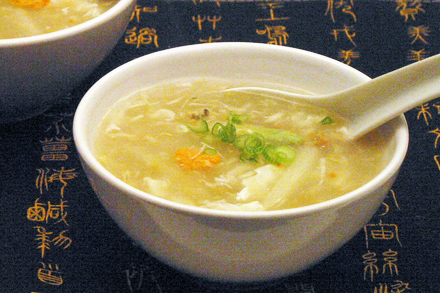
 Hunting for white asparagus at the start of the summer is not exactly orthodox. But that is what I found myself doing a few days ago. It’s not that I haven’t had any asparagus this spring. There was an abundance of green asparagus in the farmer’s markets and Pathmark across the street from where we live. Over the last few months I’ve had them steamed with butter, grilled with olive oil, dressed with Hollandaise sauce and mixed in fried rice. But a few days ago I spotted some fresh and peppy looking mud crabs in Chinatown, which instantly suggested “white asparagus and crabmeat soup” like those found in many traditional Chinese restaurants in Asia. This notion suddenly became an obsession and I immediately bought some of the crabs and went on a quest for white asparagus.
Hunting for white asparagus at the start of the summer is not exactly orthodox. But that is what I found myself doing a few days ago. It’s not that I haven’t had any asparagus this spring. There was an abundance of green asparagus in the farmer’s markets and Pathmark across the street from where we live. Over the last few months I’ve had them steamed with butter, grilled with olive oil, dressed with Hollandaise sauce and mixed in fried rice. But a few days ago I spotted some fresh and peppy looking mud crabs in Chinatown, which instantly suggested “white asparagus and crabmeat soup” like those found in many traditional Chinese restaurants in Asia. This notion suddenly became an obsession and I immediately bought some of the crabs and went on a quest for white asparagus.
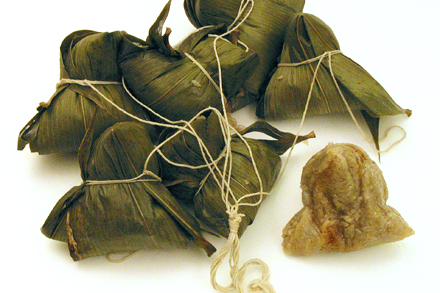
 Every year in May or June, dragon boat races are held all over the world. There are races in
Every year in May or June, dragon boat races are held all over the world. There are races in 
 I can’t believe it’s been more than a month since my last post! I’d just completed a major system development project for a client at work. The delivery of this system had taken over my entire attention. Perhaps some of the technologist readers out there might sympathize with me and I ask for your apology. As soon as the project was over I went to Chinatown and was excited to find edible lily bulbs (百合) in season. I was itching to get back to my kitchen.
I can’t believe it’s been more than a month since my last post! I’d just completed a major system development project for a client at work. The delivery of this system had taken over my entire attention. Perhaps some of the technologist readers out there might sympathize with me and I ask for your apology. As soon as the project was over I went to Chinatown and was excited to find edible lily bulbs (百合) in season. I was itching to get back to my kitchen.